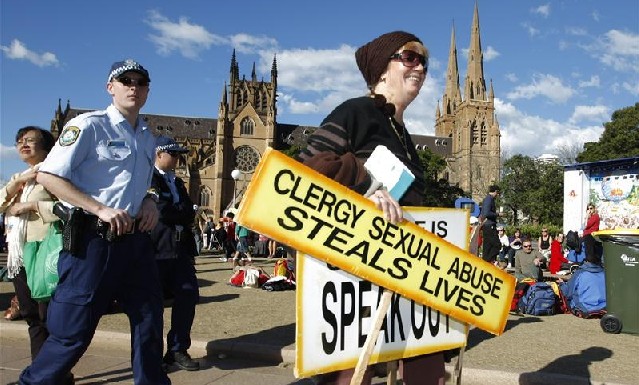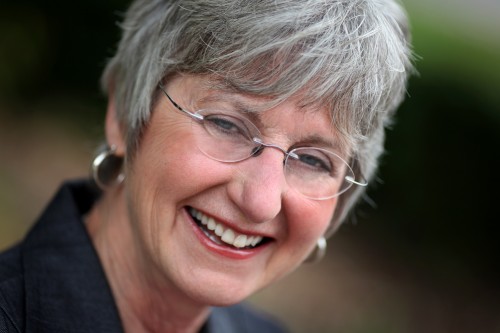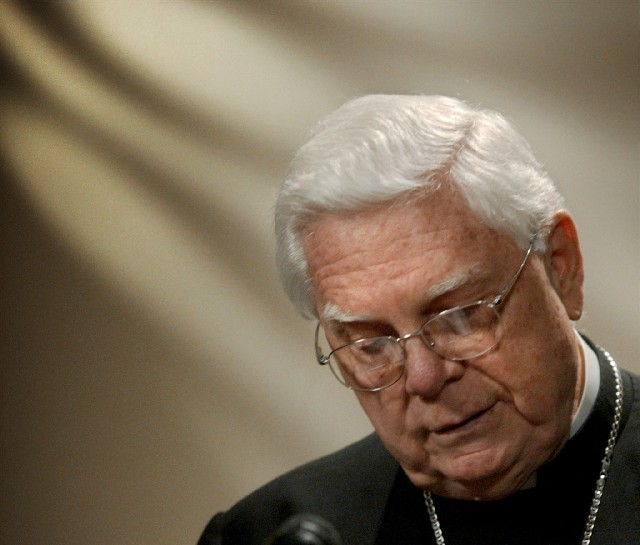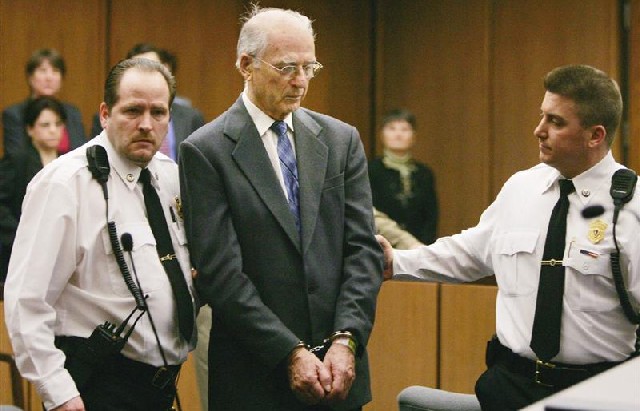Reuters
November 25, 2009
http://blogs.reuters.com/faithworld/2009/11/25/guestviewwhen-it-comes-to-clergy
-misconduct-take-off-those-stained-glass-specs/
Two large scale American studies of clergy gone off the rails raise a host of troubling and baffling questions, not solely about clergy sexual misconduct, but about how and why parishioners either tolerate or ignore signals that something is wrong. One sad but perhaps inescapable conclusion from them is that it may be time to start taking a more skeptical look at those who exercise power in our congregations.
This fall, Baylor University's School of Social Work released the results of a national study of clergy sexual misconduct with adults. Roughly three percent of adult women who attend religious services at least once a month have been the target of inappropriate sexual behavior by pastors, researchers found . That's a startling number. But even more eye-popping were the number of congregants — eight percent — who knew about clergy sexual misconduct in their faith community.
 |
| Protest against clergy sex abuse at the Catholic cathedral in Sydney Photo by Tim Wimborne |
The respect Americans institutions give to the separation of church and state makes misconduct seem like a private matter, Baylor Social Work School Dean Diana Garland told me in a telephone interview. But the power faith communities give to their clergy makes it a public one.
Clergy sexual misconduct doesn't solely damage its primary victims, she commented. It also hurts spouses, children - and congregants. In such a situation, "congregations split" she said. "Some congregants come to the defense of leaders, assuming that the woman caused leaders to fall."
The reason parishioners may ignore signals that a clergyperson is misbehaving cut to the heart of that relationship. "We ignore the warning signsÖbecause we haven't had a cognitive category to deal with it," said Garland. "It's not just an affair; it's an abuse of power."
Other factors? Parishioners tend to participate in a congregational culture of "niceness." Communication used to be very public, but it is now a lot easier to correspond or talk in private, creating situations that can build intimacy until sexual boundaries are crossed. Clergy don't always have oversight from judicatory or congregational leaders. And clergy often function in multiple roles as spiritual leader, counselor and friend.
 |
| Diana Garland |
"Most pastors are not equipped to do counseling," she said. "The role of a leader who exhorts and challenges people is very different from that of a psychotherapist who meets in a contractual way to resolve a life crisis."
Lastly, and perhaps most tragically, congregants expect that their faith community is truly a sanctuary, a safe place in which they can let down their guard. That trust has been violated again and again. "Maybe we need to recognize the humanity of our religious leaders, taking it, as well as their calling, seriously," said Garland.
Garland would like to see denominations adopt model ethical codes that lay leaders in congregations could adopt for their own use. Giving parishioners language to identify misbehavior as "misconduct" rather than a consensual affair would be a step forward. Bible studies focused on the concept of power use and abuse in church and society might be helpful, the Baylor report suggests. Researchers also suggest a way out of the church-state dilemma by proposing model legislation (which currently only exists in two states) defining sexual contact with congregants as illegal, not just immoral.
Perhaps it's time to put aside the assumption that our religious leaders can function as role models because they are, by definition, closer to God. It is possible that, under these circumstances, the best remedy may be a very secular on, increased oversight by higher-ups and vigilance on the part of congregants.
 |
| Cardinal Bernard Law after resigning as Bostonís Catholic archbishop amid charges of hushing up sexual abuse of children by his priests, 16 Dec 2002 |
American Catholic bishops recently got an update on an ongoing study of decades of sexual abuse of children in the Roman Catholic Church. The John Jay College of Criminal Justice study has come up with some provocative findings. Politicsdaily.com columnist David Gibson quoted researcher Margaret Smith: "We have not found that the problem [the sexual abuse of minors] is particular to the church," Smith told the bishops. "We have found it to be similar to the problem in society."
Researchers also suggested that eventually efforts to impose boundaries and deal with abusive clergy paid off, which is a sign of hope in a rather bleak landscape. Bishops became more enlightened on the subject and adopted a much tougher policy. Seminarians were screened more effectively. And parishioners and society in general became more aware of the terrible effect of sexual abuse on children.
 |
| Defrocked Catholic priest Paul Shanley in Boston court, 15 Feb |
The John Jay research also suggests that most of the offenders were not clinical pedophiles, but also exhibited a variety of other unhealthy behaviors.
Is it possible that there is something in the culture of congregations that allows such abuse to begin and to continue? Garland and her team have provided a way to begin asking that and other questions.
In the meantime, maybe parishioners need to take off their stained-glass lenses when they step into a place of worship, holding their leaders accountable to the same standards applied in secular organizations.
There will be times, hopefully rare, when they don't like what they see and have to figure out what they are going to do about it. But their place of worship will be a much healthier and safer place, if laypeople stop operating with blind faith that Father (or Mother, Rabbi or Imam) always knows best.
Any original material on these pages is copyright © BishopAccountability.org 2004. Reproduce freely with attribution.